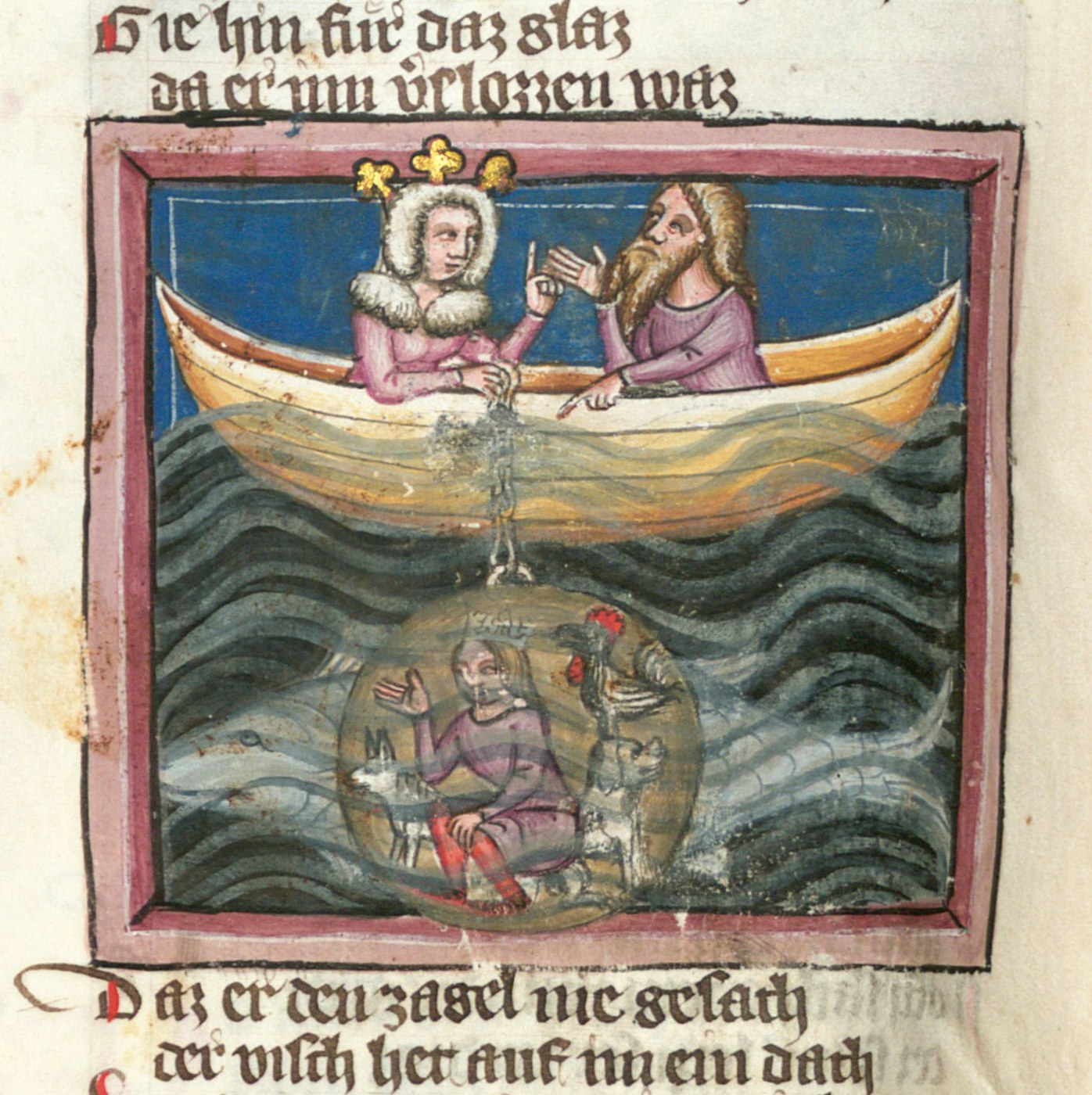The Alexander Romance is an account of the life and exploits of Alexander the Great. Although constructed around a historical core, the romance is largely fictional. It was widely copied and translated, accruing various legends and fantastical elements at different stages. The original version was composed in Ancient Greek some time before 338 CE, when a Latin translation was made, although the exact date is unknown. (from Wikipedia)
One of those tales is about a deep sea dive Alexander undertook:
” In the Problemata, a text contentiously credited to Aristotle, the philosopher tells how his student Alexander the Great descends to the depths of the sea in “a very fine barrel made entirely of white glass”, as a later poet would put it. The reasons for this descent differ across time. For some, it was to scout submarine defenses surrounding the city of Tyre during its siege. Others depict the Macedonian king met with a cruel vision of the great chain of being, stating, upon resurfacing, that “the world is damned and lost. The large and powerful fish devour the small fry”.
In one particularly elaborate version, Alexander submerges with companions — a dog, cat, and cock — entrusting his life to a mistress who holds the cord used to retrieve the bathysphere. However, during his dive, she is seduced by a lover and persuaded to elope, dropping the chains that anchor Alexander and his animal companions to their boat. Through a gruesome utility, the pets help him survive: the cock keeps track of time in the lightless fathoms, the cat serves as a rebreather to purify the vessel’s atmosphere, and the poor hound’s body becomes a kind of airbag, propelling Alexander back to the sea’s surface.” (from Public Domain Review)

When the story was told to me by Tobias Bulang, he explained that to medieval believe, the ocean does not keep dead bodies inside. Thus Alexander’s diving bell would rise back to the surface because the ocean emited the animal’s corpse. The fact that drowned corpses tend to float on the surface of the water instead of sinking to the ground gives plausible cause for this believe. Still I would be interested to understand, what people then believed to be the cause for this.
The image of Alexandre the Great below the sea became quite popular in the visual arts of the 14. and the following centuries. You can see many more creative and vivid illustrations here.
Thanks to Tobias Bulang for the lead.